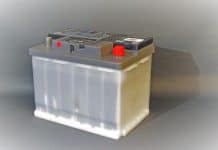The size of a standard basketball court can differ. But, knowing its dimensions is key for many places. This includes community centers, schools, and even big arenas. Understanding how big a basketball court is important for making them safe and fun to use.
A basketball court’s size includes the main playing area and safety zones. These zones are crucial for keeping players safe and following rules. The core area of a basketball court is carefully measured to make sure it fits for all types of games.
Getting the right square footage is vital for different sports places. It allows players to move freely and makes sure the hoops and lines are in the right spots. Planning a basketball court needs to be precise. It must fit standard sizes and any extra needs you might have.
Key Takeaways
- Understanding the basketball court size is crucial for proper planning and installation.
- Dimensions of a basketball court include both the play area and safety zones.
- Standard court dimensions cater to various levels, from recreational leagues to professional arenas.
- Accurate measurements are vital for player safety and regulatory compliance.
- Optimizing space requires close attention to the square footage of a basketball court.
Understanding Basketball Court Dimensions
Building a basketball space means you need to be exact with your measurements. Court sizes change a lot, based on who’s playing, how safe it needs to be, and the room you have. This guide will show you what size courts you need for different kinds of games.
Standard Court Sizes and Safety Zones
Many pros and colleges use a court that’s 94 feet long and 50 feet wide. These sizes are the same as those in the NBA and college. There’s also a 3-foot safety zone around the edges to keep players safe. This meets rules for professional courts.
Breakdown of Full-Sized Courts
Pro basketball needs courts that are built just right. They have the NBA three-point line (23.75 feet away from the hoop) and a free-throw line at 15 feet. These measures make sure the game feels the same, no matter where you play.
Customizing for Various Play Levels
Courts sizes change for different playing levels. High school courts are usually 84 by 50 feet. This is a little smaller than colleges and pros. The smaller size means younger players build their skills on a court that fits their level.
Elementary to Junior High Dimensions Considerations
Kids need courts that match their size and ability. Elementary and junior high courts are about 74 feet by 42 feet. This makes the game safer and more fun for the little ones.
Maximizing Space with Half-Court and 3v3 Dimensions
You don’t always need a full court to have fun. A half-court is great for many spaces and focuses on one hoop. For a 3v3 game, the court is 49 by 36 feet. It gives room for fast plays and smart moves.
How Many Square Feet Is a Basketball Court?
Understanding the size of a basketball court is key for any sports facility design. The area needed plays a big part in layout and building. This explains the sizes for various courts like high school ones and smaller ones.
From Planning to Execution: Preparing for Your Basketball Court Installation
To set up a basketball court properly, you must follow important steps. It starts with knowing the exact area you need, including space for safety.
The place must be suitable, considering how easy it is to get to, the land, and if it fits with the area. After choosing a place, you have to make sure the ground is ready for the court.
Getting experts for the job is a smart move. This ensures the court is built right. They know the rules for sports and safety.
Doing these steps carefully means your sports area will be good for players and people watching. Good planning and building make sure the court works well for a long time.
























































